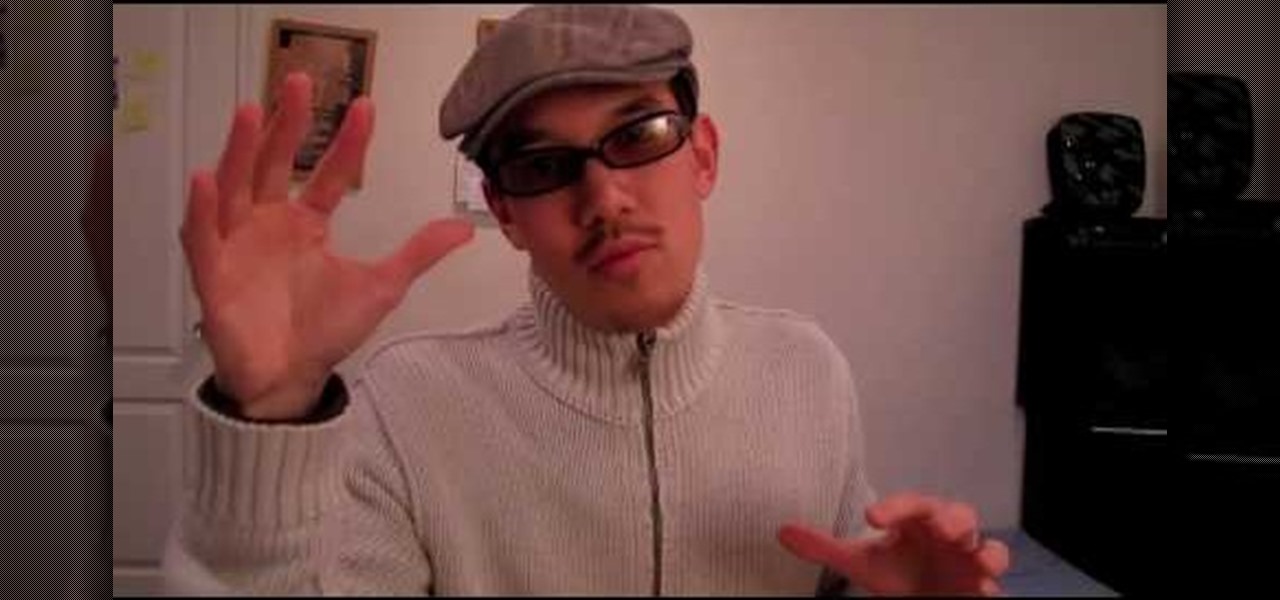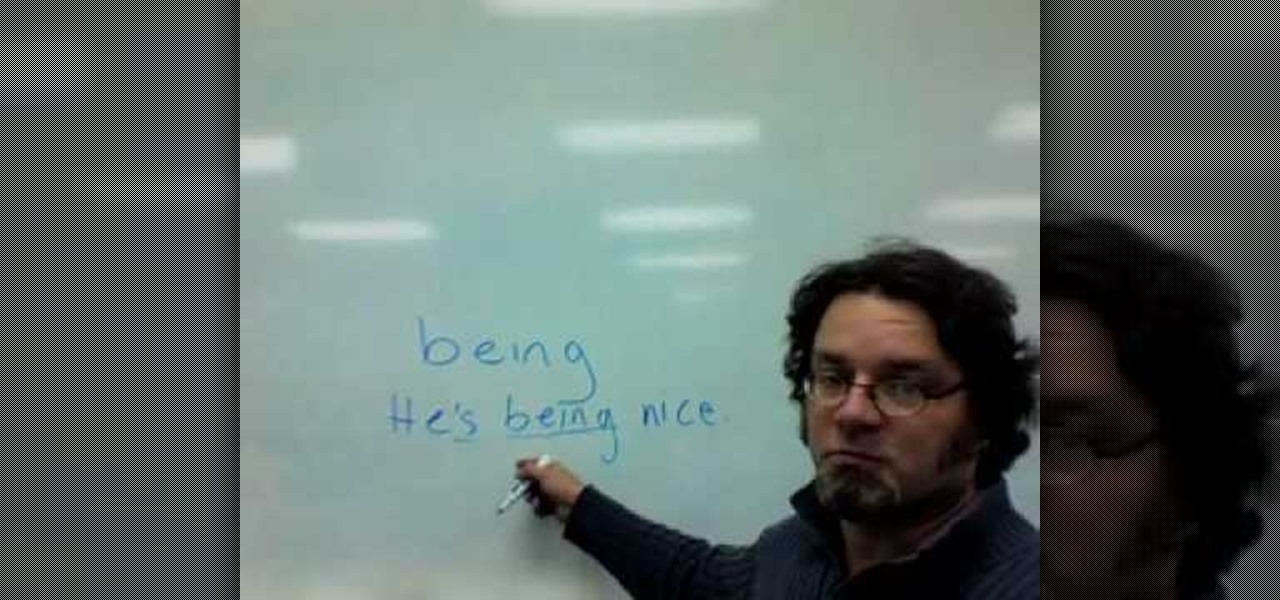Hot Language How-Tos


How To: Pronounce Arabic
In this video, we learn how to pronounce Arabic. There are families of letters to learn, that all have similar pronunciations. You will want to start out slow to learn how to say the different letters. Each letter can be pronounced up to three different ways. You will want to either have someone that already speaks Arabic to help you, or listen to audio so you know the sound. When you are reading these words, you will want to know what they sound like so you can completely understand the word...

How To: Talk about insects in Italian
In this tutorial, we learn how to say Italian words in English. To say "the insects" in Italian, you say "gli insetti". Ants are "formica", aphids are "afidi", bees are "api", and beetle is "scarafaggio". Butterfly is "farfalla", caterpillar is "bruco", cricket is "grillo", dragonfly is "libellulu", and earth worm is "lombrico". Knowing how to say these are the first stepping stones to learning to speak Italian. Just knowing these can help you start to speak this beautiful language in no time...

How To: Say different colors in Italian
In this tutorial, we learn how to say different colors in Italian. To begin, if you want to say the words "the color", you will say "I Colori" in Italian. Next, the color white is "bianco", which is the color of snow. Orange is said "arancio" and pink is said "rosa". Red is said "rosso" and green is said "verde". Blue is said "azzurro" and purple is said "violetto". Gray is said "griogio" in Italian and gold is said "oro". Learning all of these different colors can help you speak to people wh...

How To: Say "double room" in Polish
In this tutorial, we learn how to say different words in Polish. If you want to say "double room with a bathroom", you would say, "pokoj dwuosobowy z tazienka" in Polish. To just say "double room", you would say "pokoj dwuosobowy" in Polish. Finally, to just say bathroom, you would say "tazienka". Use several resources to make sure you have the pronunciation of these words correctly. This language is very difficult to learn, so you will have to learn how to pronounce the letters before you ca...
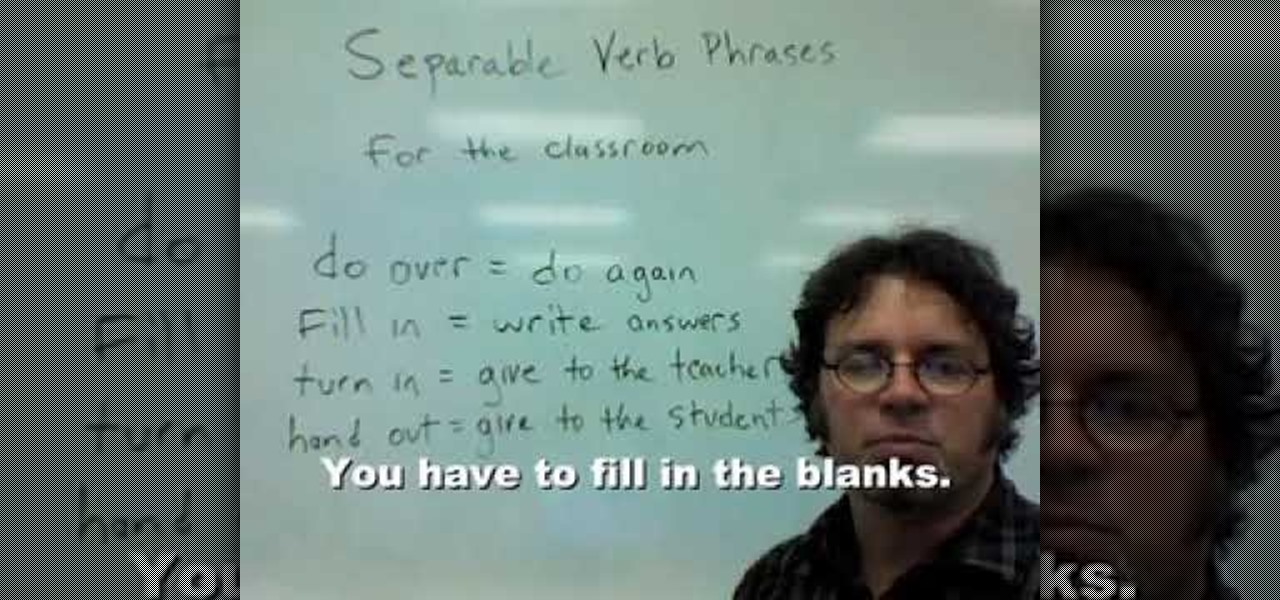
How To: Use separable verb phrases for the classroom
In this tutorial, we learn examples on how to use separable verb phrases for the classroom. The first one is, "Do over", this is the same thing as "to do something again". If you make a mistake on an assignment, your teach might ask you to "do it over". "Fill in", means to write in answers on a test or assignment, to fill in the blanks. "Turn in" means for the student to give something or hand it in to the teacher. "Hand out" is to give something to the students and this is what a teacher doe...
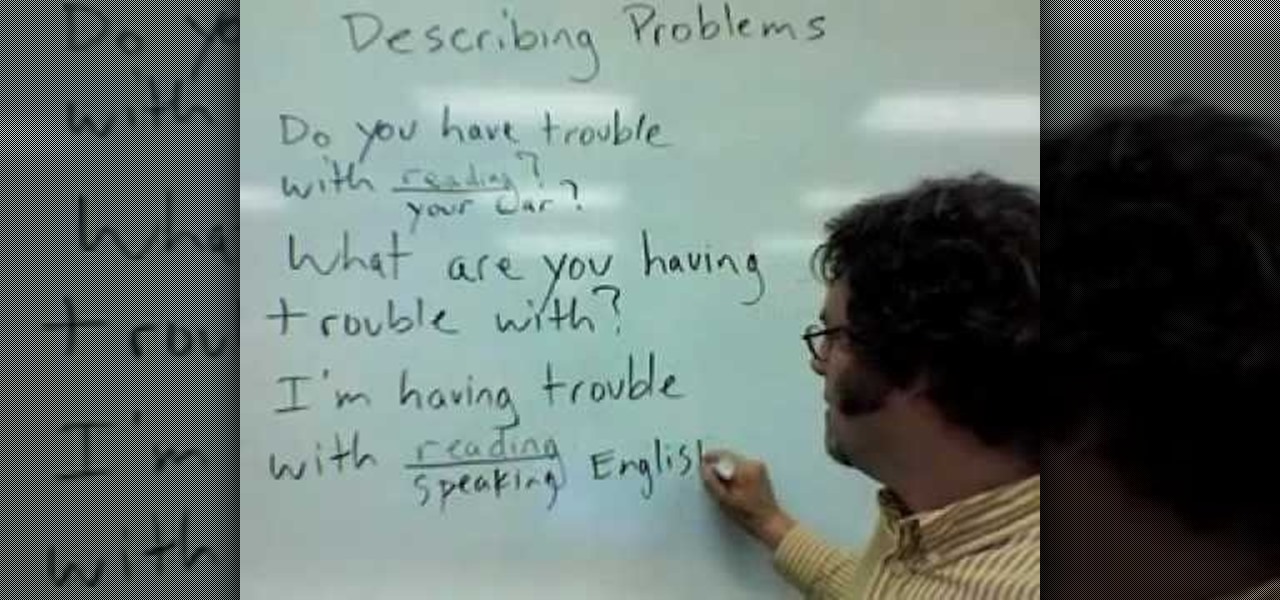
How To: Describe problems in English
This video tutorial is in the Language category which will show you how to describe problems in English. When describing problems in English, many people use the word trouble. When you frame a question, you can frame it in the present or the present continuous tense. For example; what do you have trouble with or what are you having trouble with? Similarly, when you answer the question you can use the present or the present continuous tense. Examples of this are; I have trouble with my car or ...
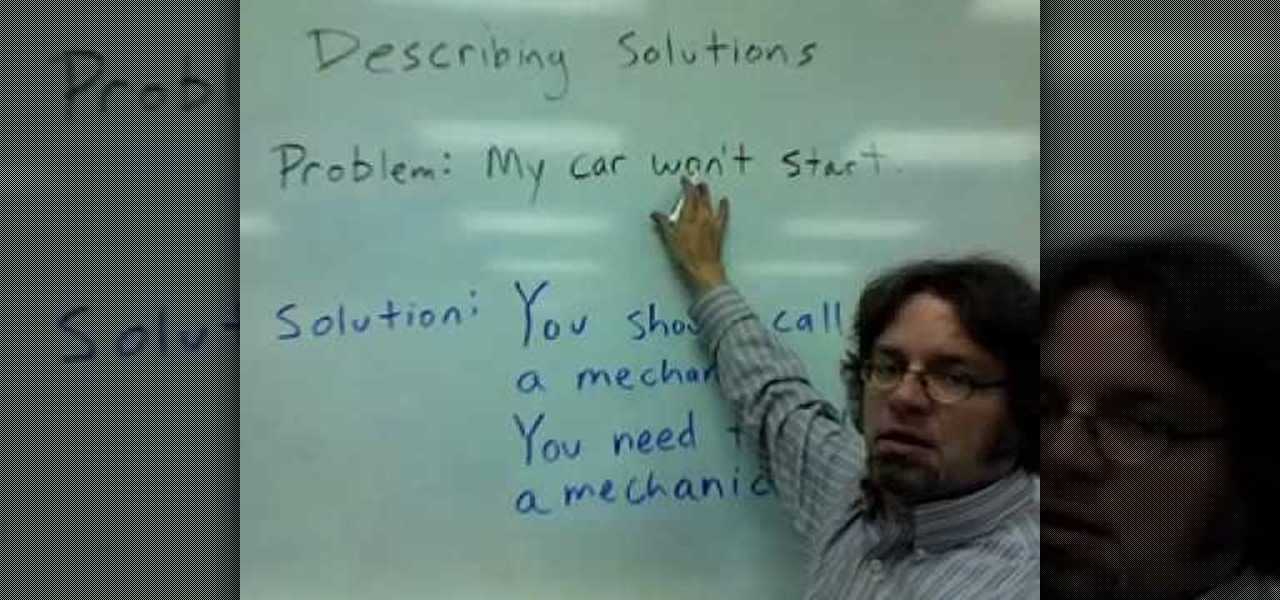
How To: Describe solutions in English
In this video, we practice describing solutions in English. For example, if the problem is that you have stomach problems, the solution is that you should go to the doctor. Should simply means a good idea or a recommendation. You could also say the solution is that you need to go to a doctor. For the next example, if your problem is that your car won't start, this means your car will not start. You could also say that your car does not start, which is a good way to describe the problem. For t...
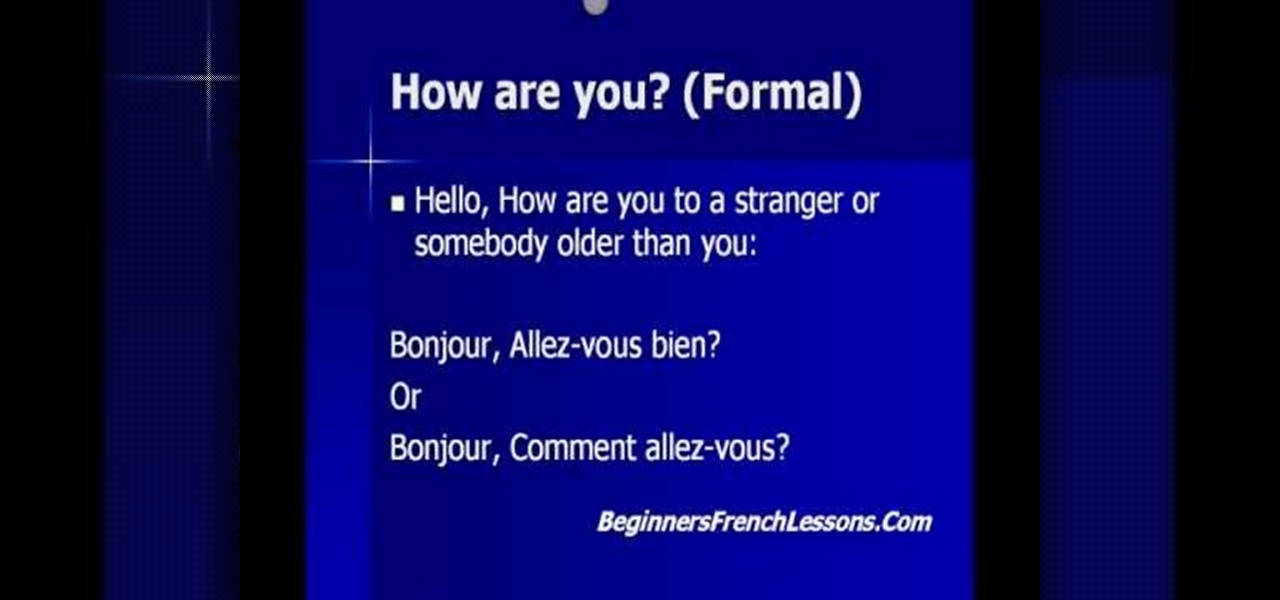
How To: Say 'hello' in French ('bojour' or 'salut')
One of the most basic things you should know in French is a nice greeting. Saying "hello" to someone in French is easy, and is comprised of either "bonjour" or "salut". To say "hello" or "hi" to a friend who is either your age or younger, you say, "salut". To ask "how are you" to someone older than you, you say "bonjour, allez-vous bien" or "bonjour, comment allez-vous?" To a friend, you ask, "Salut, Ca va bin?"
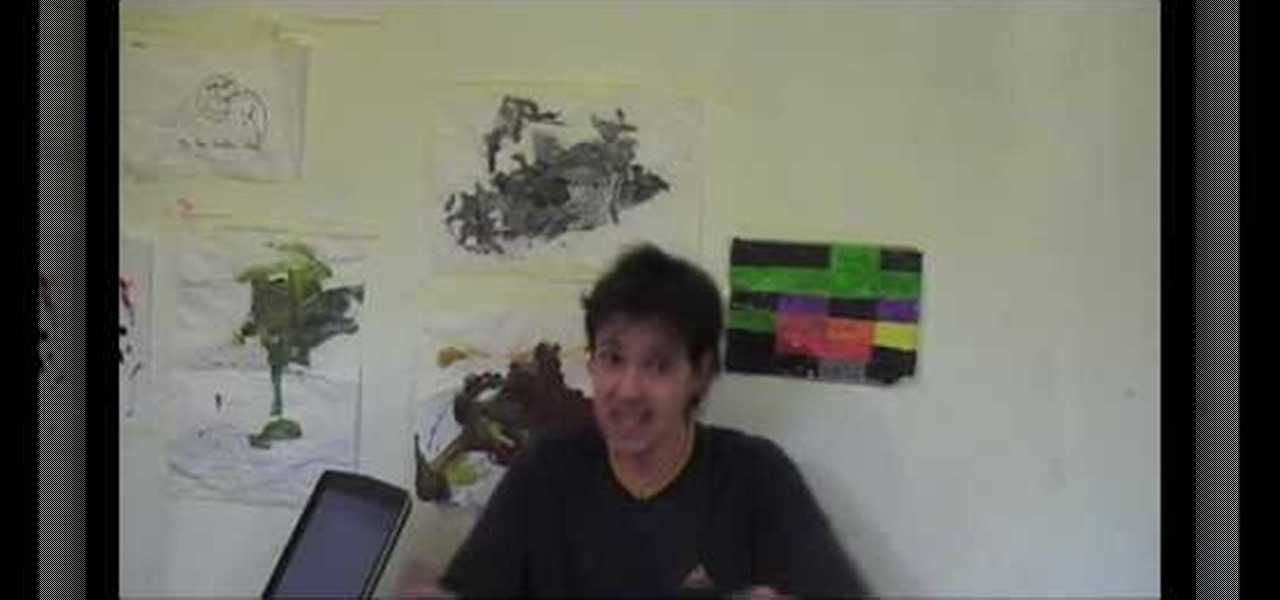
How To: Speak with a Scottish accent
In this ten...yes ten...part tutorial, you'll be finding out how to speak in a Scottish accent. This comes perfect for whenever you meet any Scottish people like Sean Connery or Gerard Butler. This is solely for entertainment purposes only and should not be taken very seriously. This guy is a real Scottsman so he is not some actor.
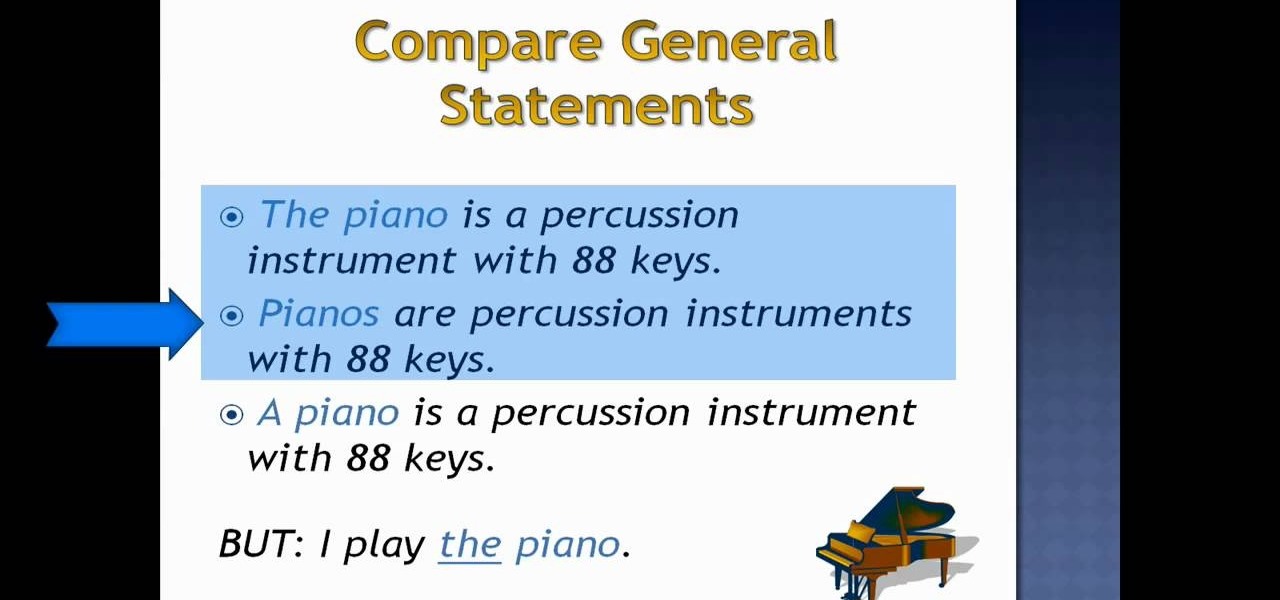
How To: Use the definite article for generic nouns in English
If you're trying to learn how to speak and understand the English language this video should help in one area: generic nouns. This is an easy subject that anybody can pick up on.
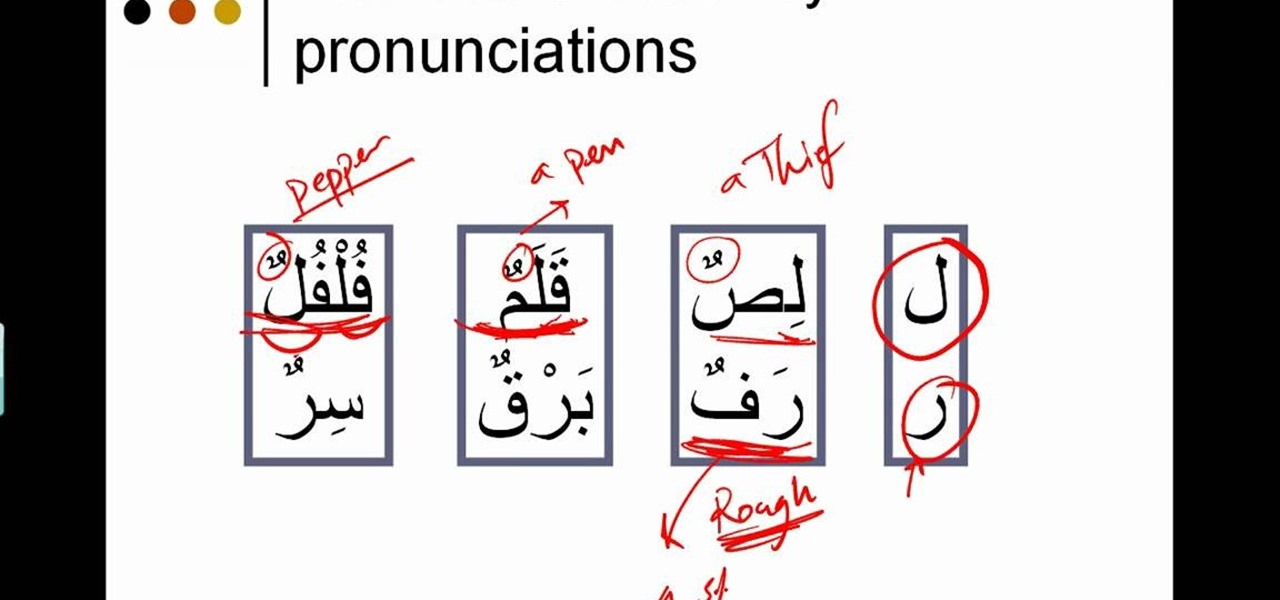
How To: Pronounce Lam and ra2
Learning a new language can be a fun and educational experience. Not only are you learning another countrie's language, but you will also pick up on their culture as well. In this tutorial you'll be learning how to say two things in arabic. It may seem like a difficult language to learn, but with the right amount of study time, it can actually be picked up pretty easily. So in this video, you'll find out how to pronounce Lam and ra2. So good luck and make sur eyou practice. Enjoy!
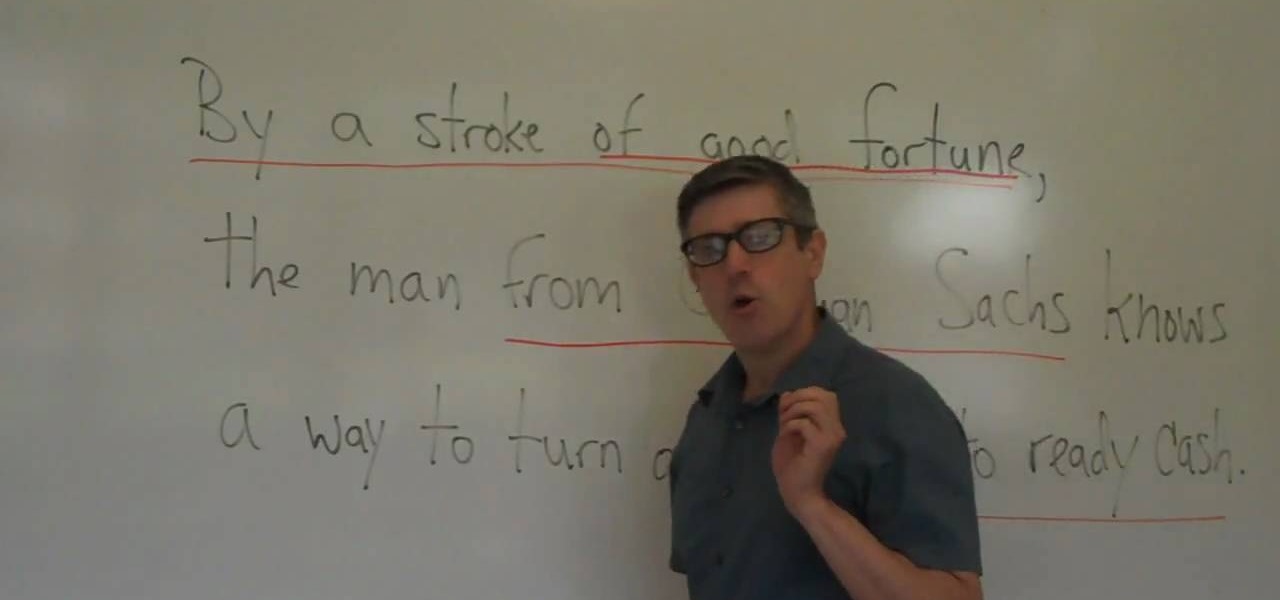
How To: Parse a sentence in English
It's time for another great grammar lesson with the Grammarian, Yossarian! In this tutorial, you'll actually be attempting to test your abilities and have to parse a sentence.
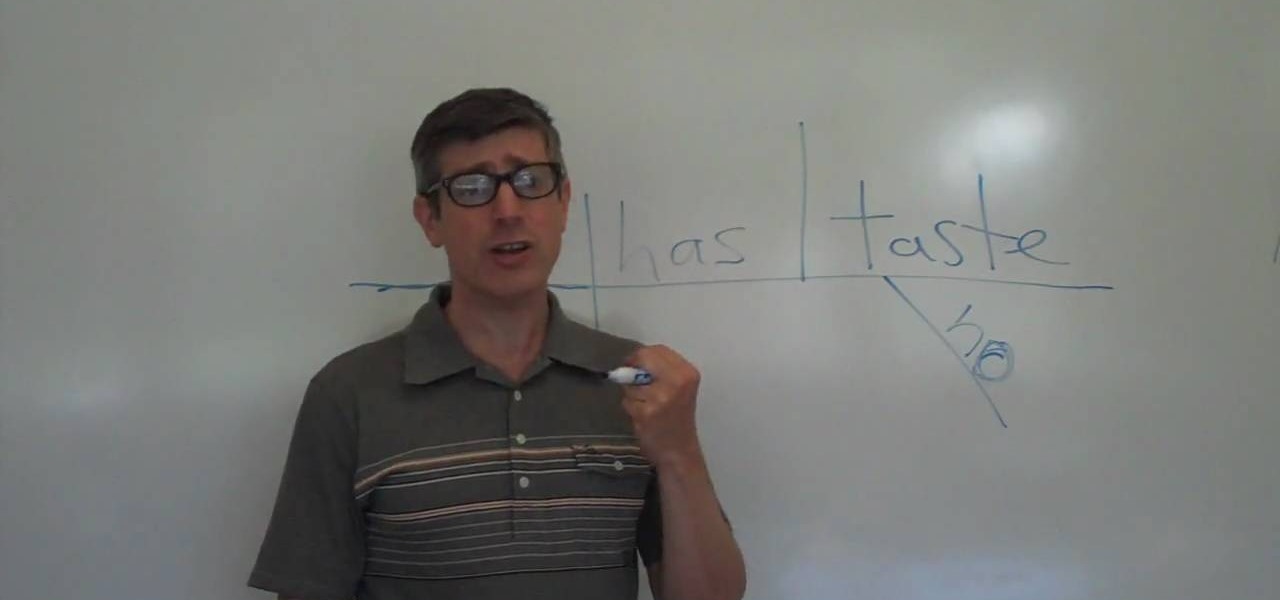
How To: Diagram the nominal clause as the subject
If you need help with creating a sentence diagram and need help with it for homework or just because, this tutorial is sure to help. In the video, you'll be finding out how to create a diagram for the nominal clause as the subject.

How To: Diagram a nominal clause as direct object
Learning English may seem like fun, but it's not. It's one of the hardest languages to learn, because there are so many different ways that sentences can be created. So it's important when learning the language, to understand the grammar behind it.

How To: Say "I just ate" in Tagalog
In this video, linguist Bud Brown provides a short lesson on speaking Tagalog. He teaches his viewers how to say that they have just something, such as saying that they have just eaten. There is a conjugation that should be remembered when you want to make a sentence of this form. You have to take the root of the word and double the first syllable of the verb. You then have to add the article "ka" before this verb. For instance, for the Tagalog verb "sabi" which means "to say", you would say ...
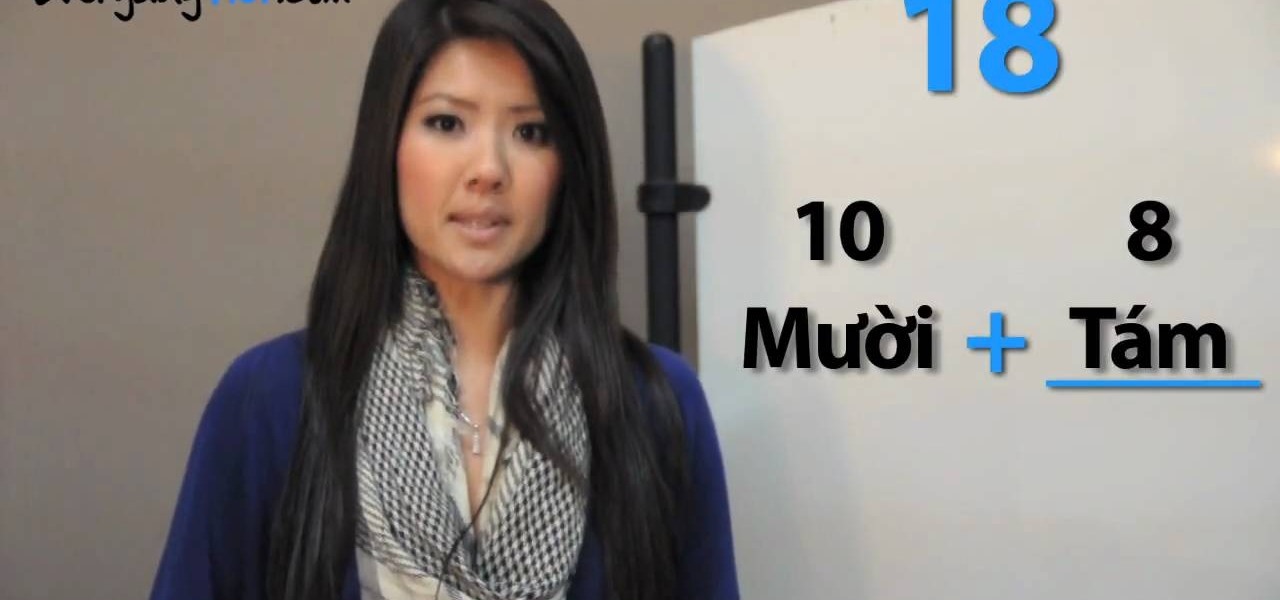
How To: Say numbers 11 to 99 in Vietnamese
In this language video tutorial you will learn how to say numbers 11 to 99 in Vietnamese. For the numbers from 11 to 19, you simply add the number to the word for 10, that is, Muoi. For example, 14 will be Muoi Bon (Bon = 4) and 18 will be Muoi Tam (Tam = 8). For multiples of 10, simply add Muoi after the number. For example, 20 will be Hai Muoi (Hai = 2), 30 will be Ba Muoi (Ba =3), 40 is Bon Muoi and so on. For all other numbers, simply add the number after the multiple of 10. For example, ...
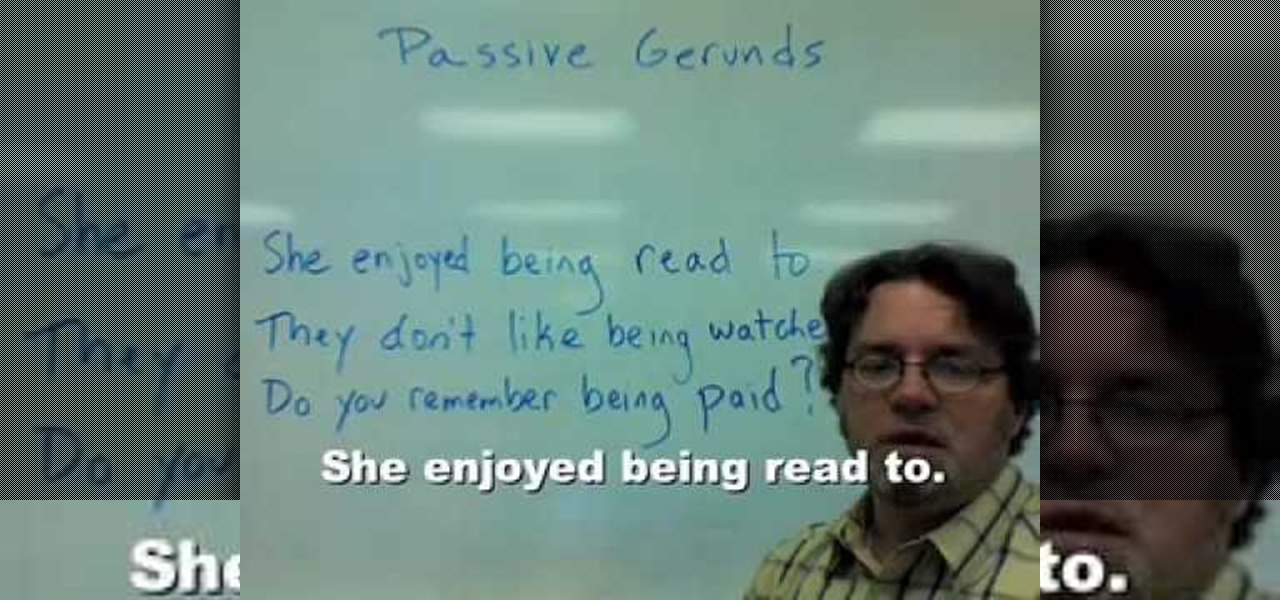
How To: Use gerunds in the passive voice in American English
In this clip, an English teacher shows how to use gerunds in the passive voice. It's easier than you might think! It's so easy, in fact, that this free video English lesson can present a complete, detailed overview of passive voice gerunds in just over three minutes. For more information, and to get started improving your own English, take a look.

How To: Confess your love for someone in Japanese
Learning a new language can be a hard and trying task. It takes time and patience to fully understand and use a language. Something else that can be difficult is confessing your love to someone. So in this tutorial, you'll find out how to confess your love for someone in Japanese. So good luck and enjoy!

How To: Say "I want to go to the Bund" in Shanghai
If you're going to stop by the 2010 World Expo in Shanghia, China, you'll probably get sidetracked at one point or another. Any traveler to Shanghai will want to see The Bund. But if you don't know how to say "Bund" in the Shanghai language, you can kiss your site-seeing days "zeh wèh" (goodbye).
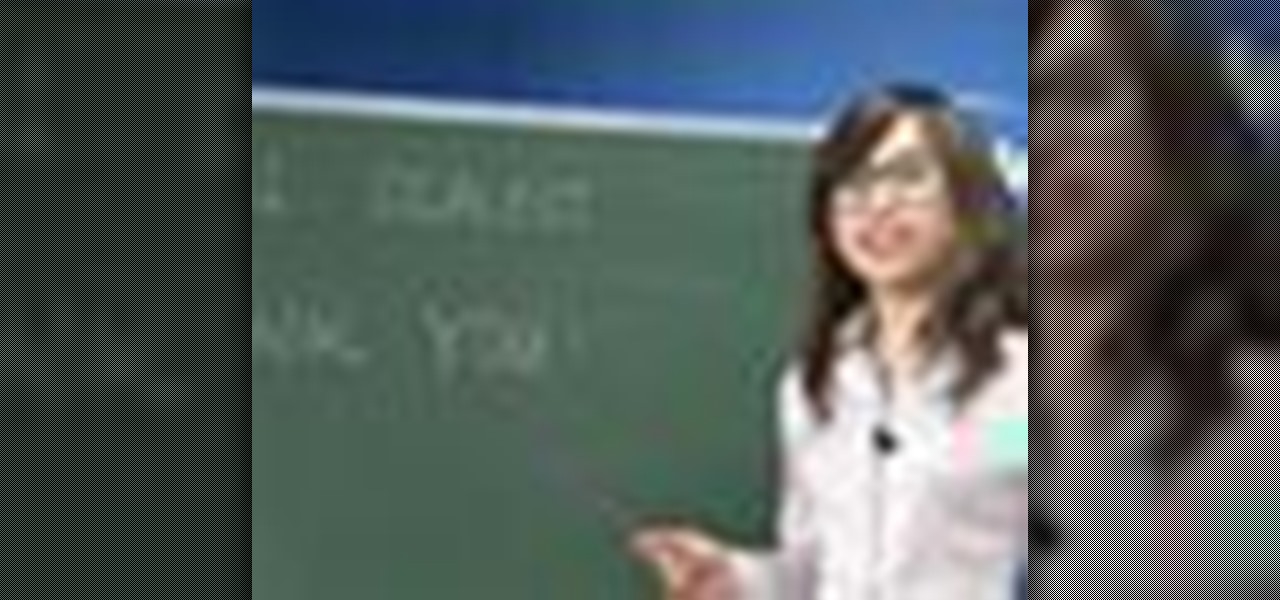
How To: Say "thank you" and "you are welcome" in Shanghai
With the World Expo 2010 in Shanghai, China this year, the one thing every attendee should know is a little Shanghai dialect. Nothing big, just the key phrases, and the most polite phrases, like "thanks" and "you're welcome." Politeness always wins the best of them, even in foreign countries.

How To: Say "goodbye" in the Shanghai dialect
The World Expo 2010 is here! This year's Expo runs from May until October in Shanghai, China. Shanghai has always been the popular choice for the Expo, so if you want to go, make sure you know how to speak to the locals. At least, the basics anyway.
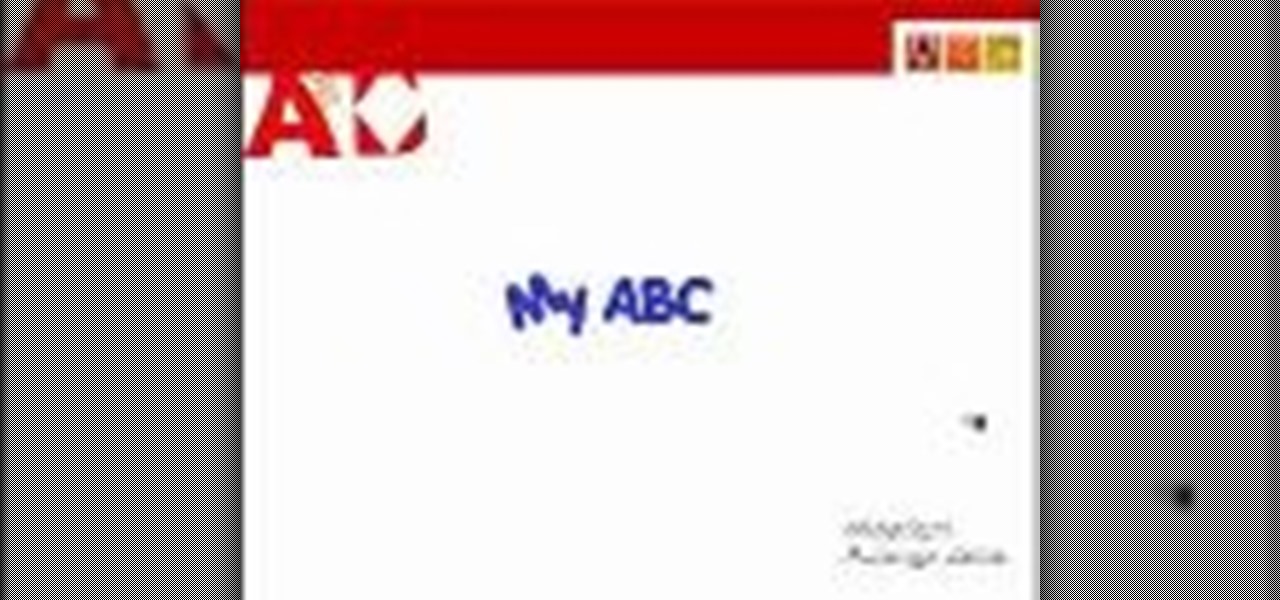
How To: Pronounce the alphabet correctly in English
This video will show you how to pronounce the alphabet correctly in English. If you have trouble hearing the correct pronunciation, and telling the difference between "c" and "d" and "b", this video helps you out with clear enunciation of each letter. Watch this video to pronounce each English letter correctly.
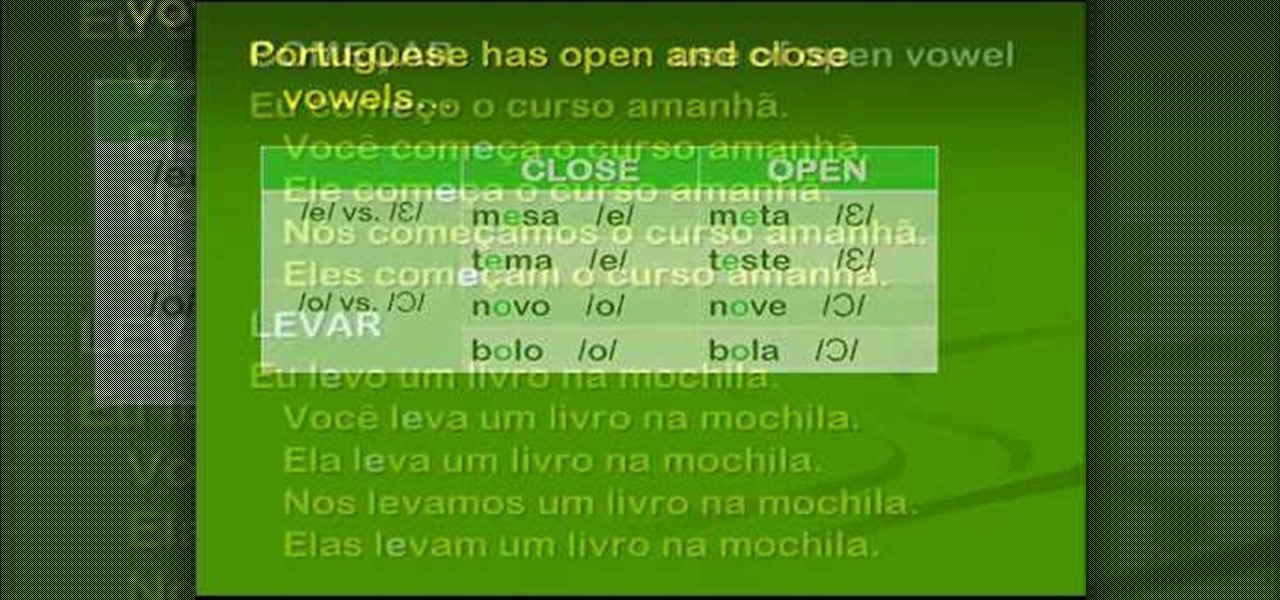
How To: Conjugate present tense verbs in Brazilian Portuguese
Interested in learning Brazilian Portuguese? In this video from Professor Jason, go over the present tense verb conjugations and close and open vowels. The present tense verb conjugations in Brazilian Portuguese are gone over, as well as a focus on pronouncing the close and open vowels in certain AR and ER verbs. Good luck!
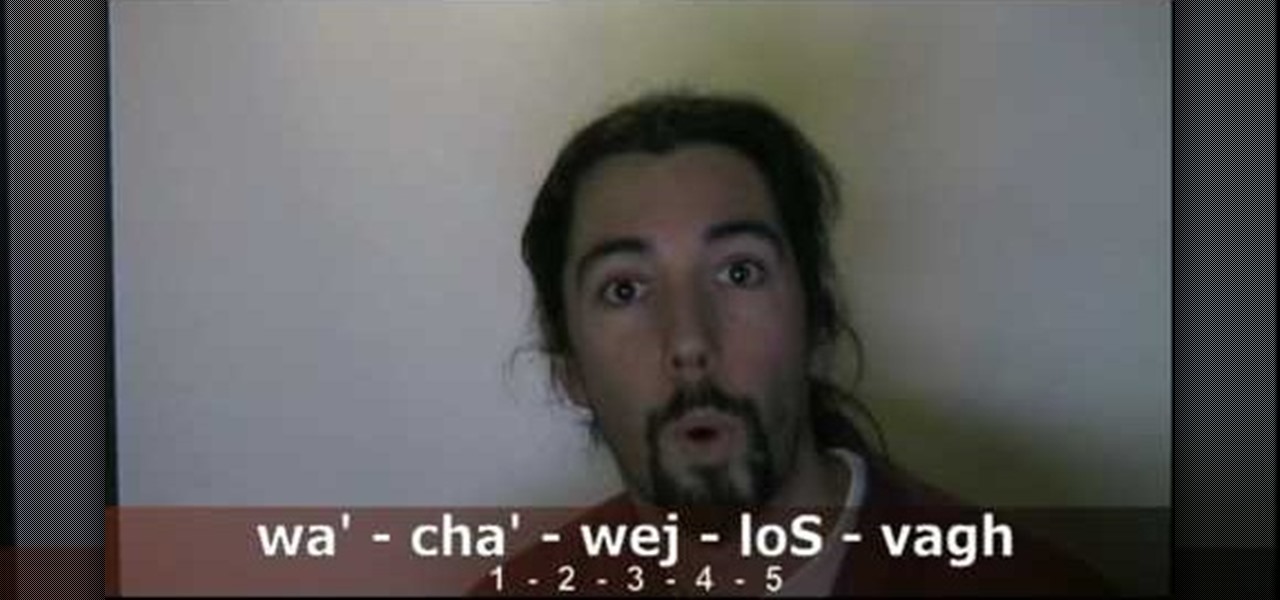
How To: Count from 1 to 10 in Klingon
Admit it: you're a die-hard Star Trek fan at heart. And you know that the best aliens in Star Trek are the Klingons. This video will show you how to count in Klingon. There's English subtitles, but pay attention to the pronunciation! Once you learn these Klingon numbers, go ahead and try it out on your friends!

How To: Use the Spanish words "muy" and "mucho" properly
Learning to differentiate between common nearly synonymous words in a foreign language is one of the biggest challenges inherent in learning another language. Here, Spanish instructor Professor Jason breaks down the difference between the Spanish words "muy" and "mucho". While these both seem like they mean "more" to many English speakers, one is actually an adverb and the other an adjective, so using them interchangeably can be a major mistake. Many examples and a quiz are included in the vi...
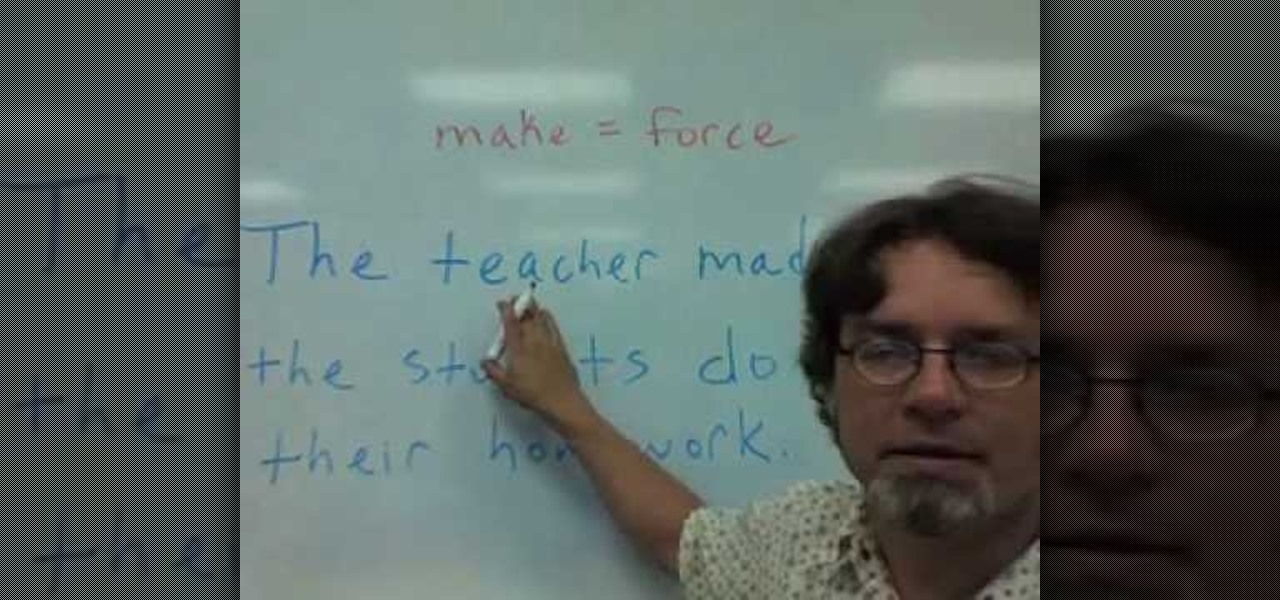
How To: Use "make" as a causative verb in American English
An online English teacher explains to English-language learners how to correctly use the word "make" as a causative verb in this instructional video. As usual, he provides many examples to in order to make the contextual usage of this important verb more clear to those attempting to learn American English for work or pleasure.
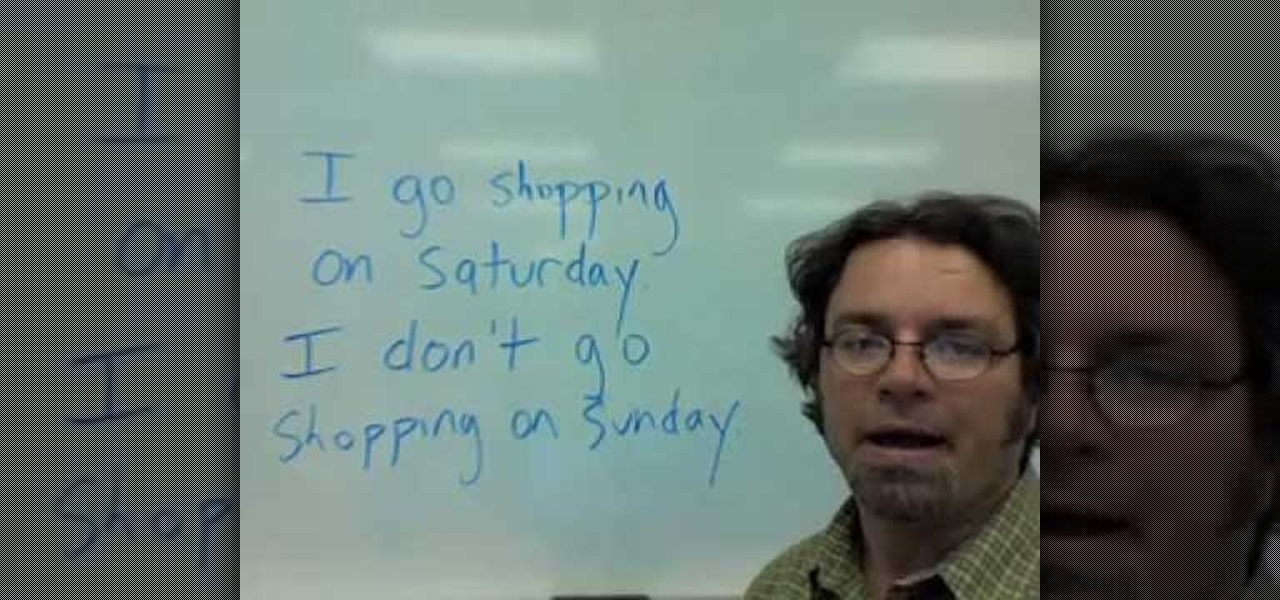
How To: Use the phrase "go shopping" in American English
Learning proper American English usage is a challenge, but fortunately this video is here to explain the usage of one common phrase to the non-native English learner. That phrase, one near and dear to the hearts of Americans, is "go shopping". This simple instructional video point out common mistakes that English learners make and shows how to use the phrase correctly in context.
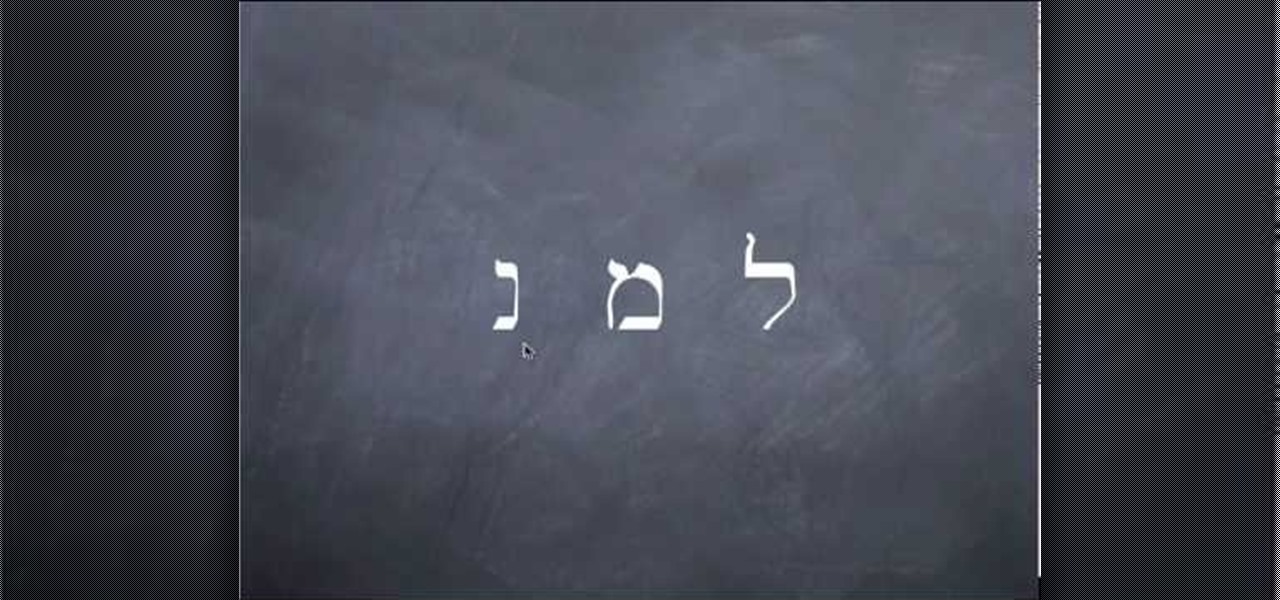
How To: Sing the Hebrew "Aleph-Bet" with "Twinkle Little Star"
One of the best ways to learn the Hebrew alphabet is to use the alphabet song. But this twist on the song incorporates "Twinkle, Twinkle Little Star" in order to better remember the alphabet. "Twinkle, Twinkle Little Star" is the song that most English speakers learn their alphabet to, so why wouldn't it work with the Hebrew "Aleph-Bet"? The Aleph Bet has 22 letters which are all consonants. Get more details here. There are actually three videos here, the first is slow. The second if medium s...

How To: Conjugate stem changing verbs in Spanish
If you are confused in Spanish class, give this tutorial a try. In it, you will learn how to conjugate stem changing verbs in Spanish, using the verb "querer" as an example. Stem changes can be confusing for a first time Spanish learner, but this video can help.
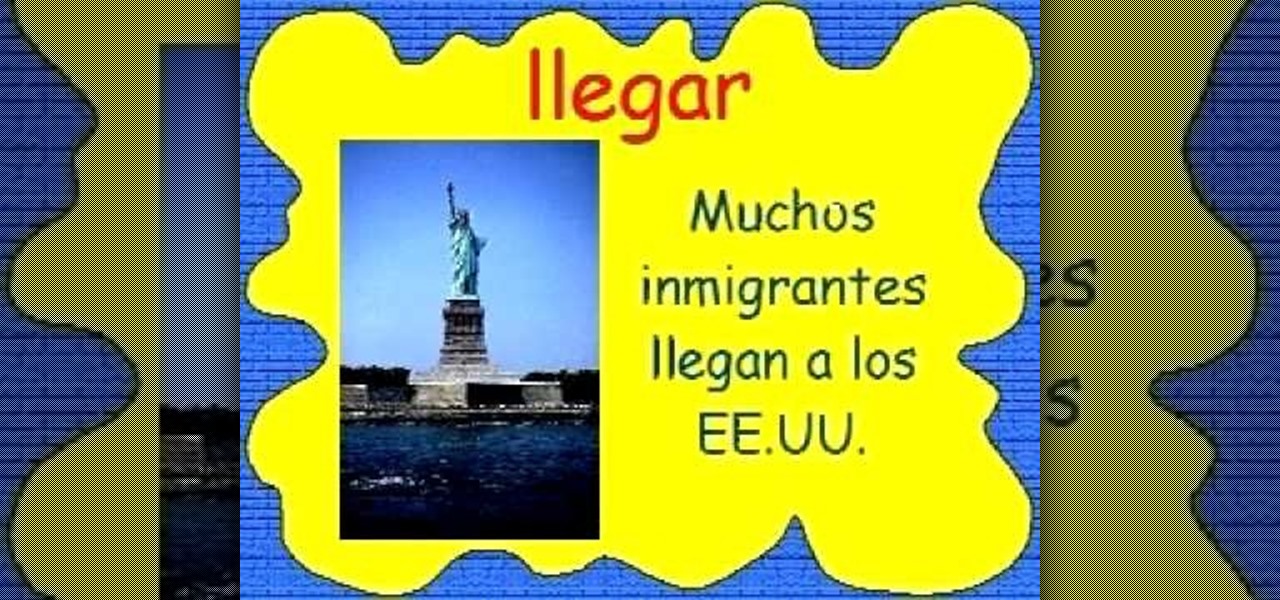
How To: Conjugate "-ar" verbs in Spanish
When you start learning Spanish, you will need to know how to conjugate verbs properly. In this tutorial, learn to conjugate one of the most common types of verbs - those that end in the letters "-ar". This video is taught by a real teacher and includes many examples, so follow along and get ready to start morphing your verbs. You will be talking like a native speaker in no time.

How To: Say I love you in French
In this how to video, you will learn how to say "I Love You" in French. French is known as the language love, so it is very appropriate to learn how to say this properly. First, remember that "I Love You" is written as "Je t'aime" in French. Practice saying the pronunciation until you can easily say it. To answer "I love you too," note that it is written as "Mio aussi." Keep on saying this words until you learn the correct pronunciation. Once you can say both of these consistently and with th...
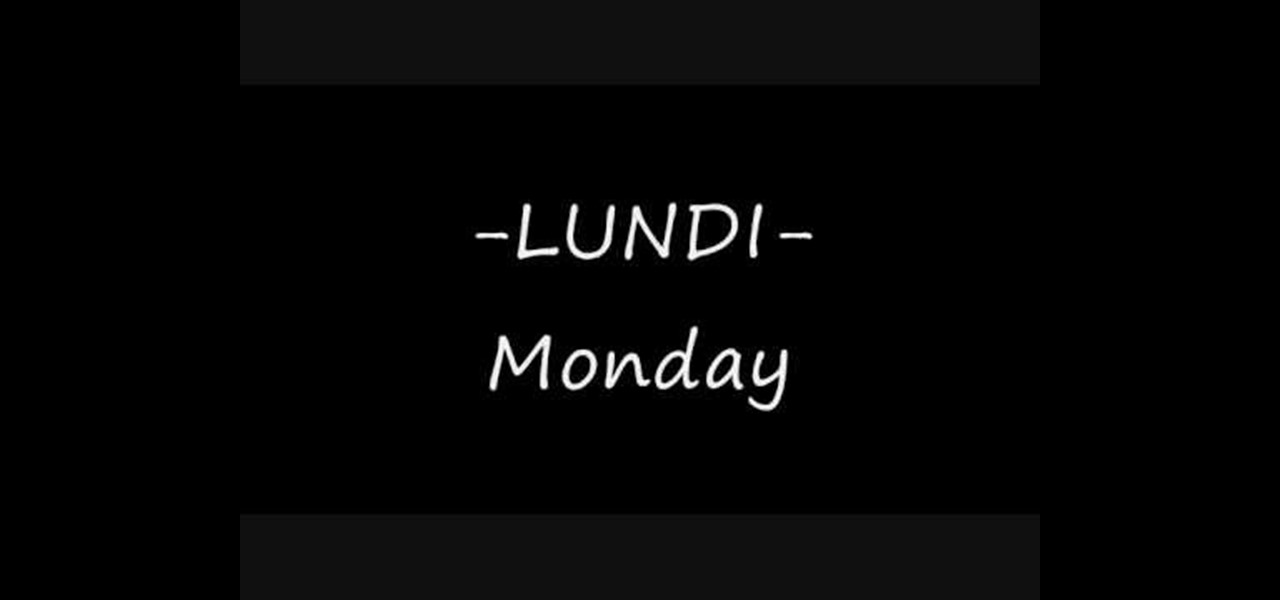
How To: Say the days of the week in French
Learn Languages shows us how to say the days of the week in French, and then ask what day it is. Starting with Monday, the presenter familiarizes us with the French names lundi, mardi, mercredi, jeudi, vendredi, samedi, and dimanche. He also points out that it is important to not capitalize these words. We start slowly, then pick up the pace and say them in sequence more quickly. The presenter follows this up with a short quiz, to make sure we remember the names. We are then presented with a ...

How To: Say "hi" & "thank you" in Korean
We are taught in the video how to say hello and thank you in Korean. The Koren word for Hello is spoken several times so we're able to hear the pronunciation.
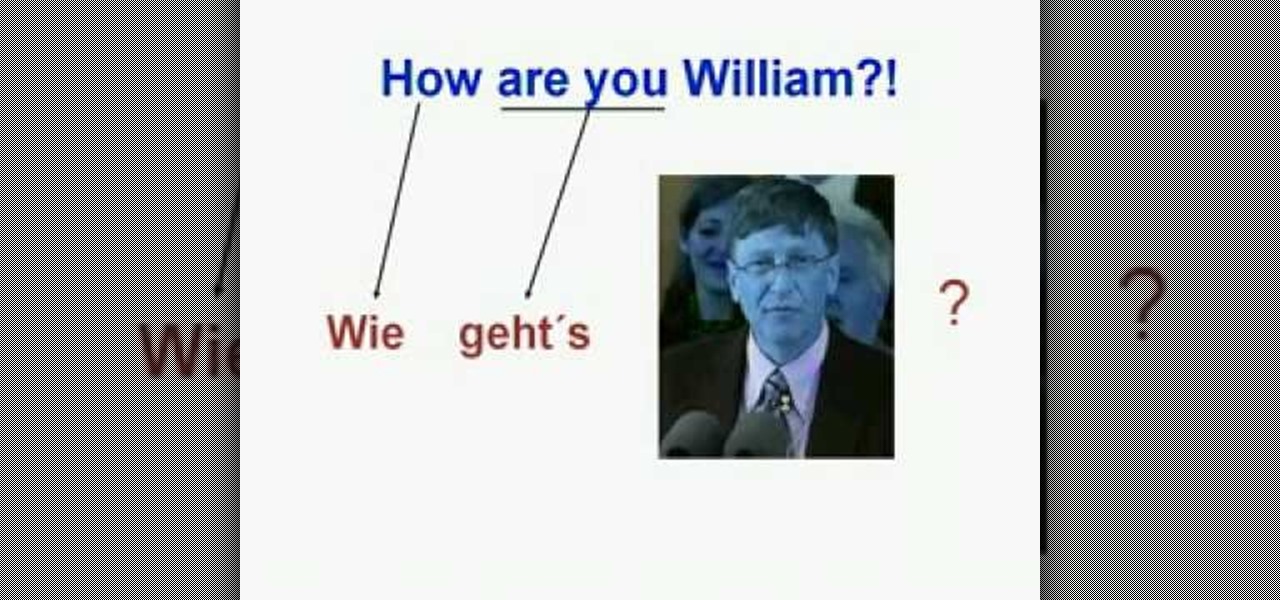
How To: Say "hello, how are you?" in German
Hallo! Hallo is the proper way to say "hello" in German... easy enough, right? Take your lesson one step further by practicing your pronunciation alongside this language video. Learn also how to ask "hello, how are you?" word-for-word with help from this free lesson.

How To: Say hello in Mandarin, Cantonese & Shanghainese
Hallo zusammen! That means, "hello everybody" in German. In this language instructional, learn how to say "hello everybody" and "goodbye" in German and three different Chinese dialects: Mandarine, Cantonese & Shanghaine.

How To: Speak in Pig Latin
Impress your friends with a little nostalgia by breaking out the easiest "foreign language" out there: Pig Latin! Speaking Pig Latin is as easy at it was when you were a kid. Once you get used to pronouncing words this way again, you'll be a certified Pig Latin expert again.

How To: Say hello in Japanesse
It couldn't be any simpler than this. You don't need to fuss around to learn Japanese phrases. This instructional video makes it easy as possible by quickly showing you the correct way to say hello in Japanese. It only takes three seconds to pay attention and listen carefully!
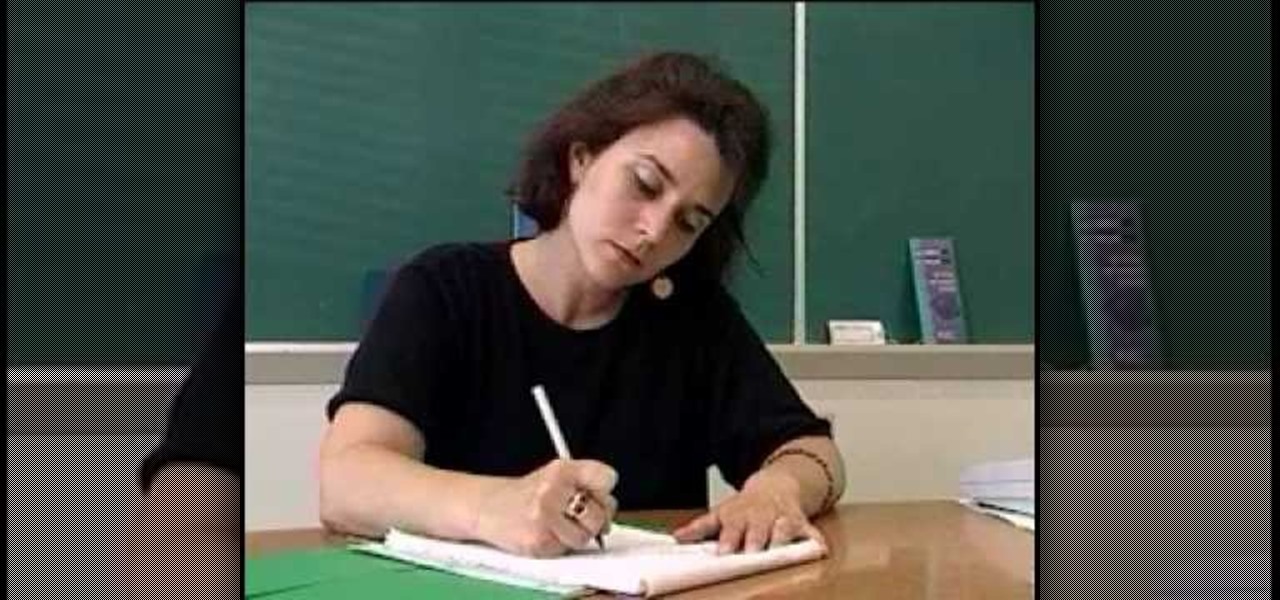
How To: Say 'hello' to someone in French
This video teaches you how to say hello to someone in French. When you approach a female, you should say “Bonjour, Madame”. The first word has two (2) syllables. The first syllable is pronounced the same as the word bone is pronounced in English. The second syllable of the first word is pronounced like the English word Jew: i.e. bone-Jew. The j sound in Jew should be overly exaggerated. To say hello to a male, you should say “Bonjour, Monsieur”. This is a formal way to say hello.

How To: Say hello in French, German, Italian & more
In this video from TwinsEre199 we learn how to say hello in 10 different languages. It goes through each language and shows the spelling on the screen and in some cases the pronunciation as well. It is not said out loud at all but you can see each word on the screen and sound it out for yourself. The following are the languages you will learn: French is bonjour. Spanish is hola. Italian is Bon Giorno. German is Guten. Chinese is Ni Hao. Irish is Dia Duit. Hindi is Namaste. Russian is Zdravstv...

How To: Say "goodnight" in Polish
Learn how to say "Good night" in Polish in simple and easy steps. 1. First find out the correct Polish word for the English word "Good night" which is "dobranac". 2. Now spell out Polish correctly without any spelling mistakes. 3. Try to speak out the word slowly and ensure you pronounce the Polish word exactly. 4. Practice it a few times until you pronounce it correctly without any mistakes.



